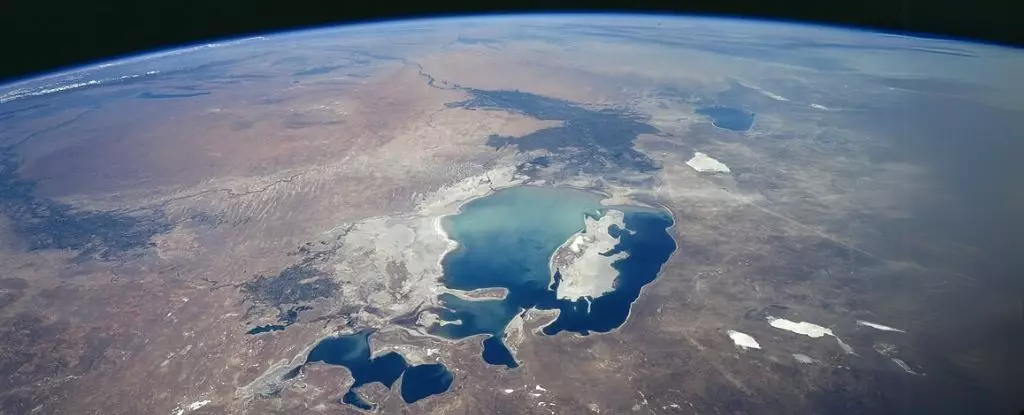Once celebrated as the fourth largest lake on the planet, the Aral Sea sprawled magnificently across the territories of Uzbekistan and Kazakhstan before the 1960s, covering an impressive area of 68,000 square kilometers (26,000 square miles). The lake was not merely a body of water; it was an ecosystem, a source of livelihood, and a community hub for the nearby populations. However, by 2015, this vibrant aquatic expanse had dramatically shrunk to a mere shadow of its former self, dwindling to approximately 8,000 square kilometers. This disheartening transformation gave rise to the Aralkum Desert, a testament to humanity’s failure to respect its natural resources.
Environmental experts have called the Aral Sea’s decline one of the most significant ecological catastrophes of our time. Ibrahim Thiaw, the Executive Secretary of the United Nations Convention to Combat Desertification, emphasized the magnitude of this disaster, underscoring its far-reaching environmental and socioeconomic implications. With the lake’s retreat, around 3 million inhabitants found themselves grappling with adverse living conditions, as the former aquatic paradise turned into a barren wasteland.
The origins of the Aral Sea’s plight lie in the relentless industrialization and agricultural practices pursued during the Soviet era. Between the 1960s and 1990s, the rivers Amu Darya and Syr Darya, which were the lifeblood of the Aral Sea, were redirected to support extensive cotton cultivation intended for the Soviet Union’s export economy. This massive agricultural initiative involved the irrigation of 7 million hectares (1.7 million acres) and showcased short-sighted decision-making prioritizing economic gains at the expense of ecological stability.
The immediate aftermath of these actions was catastrophic. The diversion of these river systems led to a dramatic reduction in the freshwater inflow to the Aral Sea, essentially starving it of life-giving resources. As a result, salinity levels surged to unprecedented heights, surpassing that of the ocean and rendering the water inhospitable for the native aquatic species. Consequently, the lake’s ecology unraveled, leading to the collapse of the local fishing industry and the decimation of the communities that depended on it. The fading silhouettes of rusted fishing boats now serve as haunting reminders of livelihoods lost to careless environmental exploitation.
The adverse consequences of the Aral Sea’s evaporation extend beyond ecological collapse; they encompass severe public health challenges as well. The fine dust rising from the former lakebed has been linked to significant health risks, including respiratory diseases and congenital defects among both adults and children living in the vicinity. The toxicity of this dust is further exacerbated by remnants of chemical waste from Soviet military operations and agricultural runoff laden with fertilizers and pesticides. This combination of hazardous materials poses a serious threat to the population’s health and well-being, creating a distressing cycle of ecological and human suffering.
As the situation deteriorates, regional governments have initiated measures to combat the encroaching toxicity through afforestation projects aimed at stabilizing the remaining soil. Local scientists are diligently researching plant species resilient enough to thrive in the high-salinity conditions that now dominate the landscape.
The Aral Sea serves as a stark warning that resonates far beyond its borders. The environmental mismanagement witnessed in the region reflects a broader pattern evident across the globe, where industrial agriculture and climate change continue to deplete lakes and rivers in various corners of the world. From Africa to Australia and the Americas, the signs of ecological deterioration are unmistakable, echoing the fate of the Aral Sea.
This cautionary tale urges us to acknowledge the critical importance of sustainable water management and environmental preservation. The repercussions of neglecting such priorities can lead to dire ecological consequences, as demonstrated by the once-thriving Aral Sea. It is imperative for nations and communities to collaborate on responsible resource management, placing the health of our planet and its inhabitants above short-term gains. If we fail to learn from the lessons of the Aral Sea, we may find ourselves facing similar calamities in our own backyards.

Leave a Reply